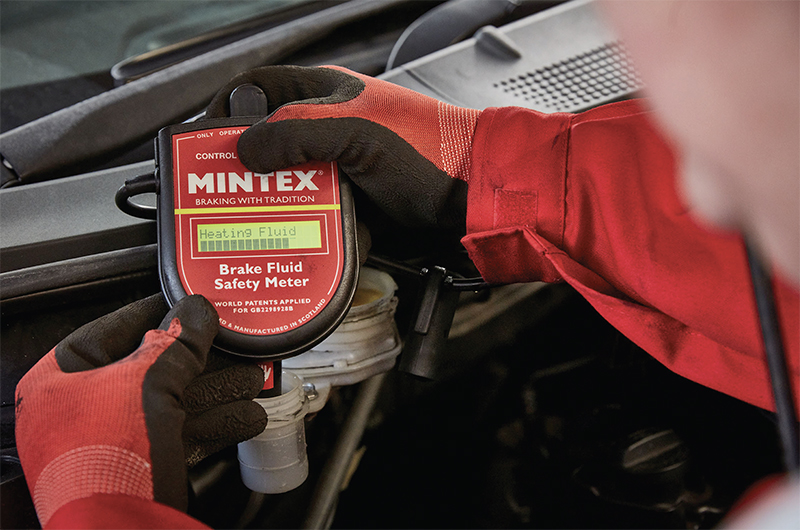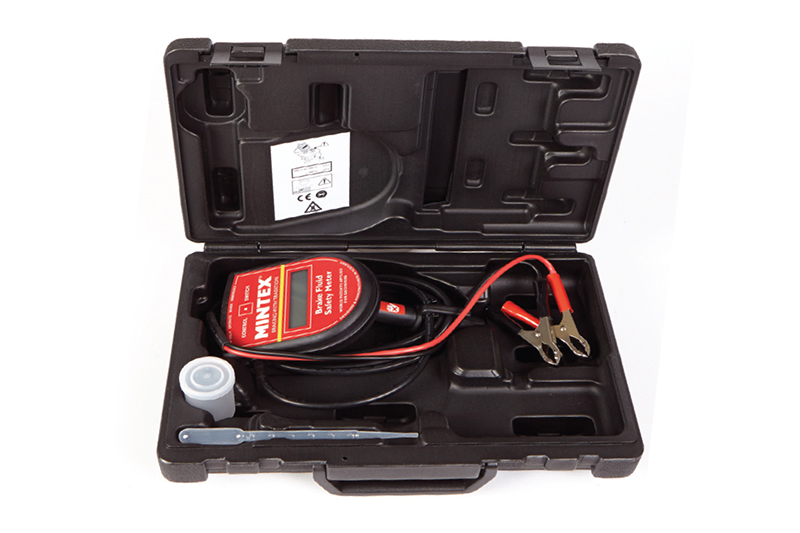
Scott Irwin MIMI, head of technical training at TMD Friction’s aftermarket brake brand, Mintex, discusses why garages need to educate their customers on the technicalities around each variation of brake fluid.
When it comes to vehicle maintenance, monitoring the condition of brake fluid rarely makes most driver’s to-do lists. This can lead to dangerous consequences for customers and a missed service opportunity for garages.
The best characteristics of a good brake fluid starts with the research and development work that goes into it, to ensure safety is paramount before it’s offered to the market. Without research and development first looking at the chemical composition and identifying the properties for the correct fluid for the application of vehicle, the brake fluid would not meet all the safety requirements that are needed.
The main requirements for brake fluids are high operation temperatures, good low- temperature and viscosity-temperature properties, physical and chemical stability, protection of metals from corrosion, inactivity with respect to mechanical rubber articles, and lubricating effect. If a brake fluid does not meet all safety requirements, such as high operation temperatures, good low-temperature and viscosity-temperature properties, physical and chemical stability, protection of metals from corrosion, inactivity with respect to mechanical rubber articles, and lubricating effect, the required safety requirements will be affected.
It’s safe to say that brake fluid is safety critical and if the quality is insufficient this can lead to system failures in the brakes.
Brake fluids for hybrid or fully electric vehicles
Electric and hybrid vehicles are gaining popularity in the aftermarket and for such vehicles, you need to ensure you know what fluid is available that meets the needs of these vehicles. When the vehicle battery is full, the brake system can’t take advantage of regenerative braking and so the brakes will have to do all the work without any support from engine braking. This creates a need for a high dry and wet boiling point. In normal conditions, brakes will be used less due to the proportion of the work carried out by the regenerative braking, but they must still be in perfect working order when needed. This creates the need for enhanced corrosion protection.
Due to major electrical currents in the vicinity of the brake system, a lower conductivity fluid is advisable. As with all modern vehicles, the developments in ESP, ABS, ADAS and AD, means cars are going to put great emphasis on cycle time and frequency.
In turn this will place increasing demands on brake fluid lubricity and viscosity in the electric and hybrid vehicle braking systems.
Common mistakes
It’s true to say that mistakes will happen, but the main major mistake TMD experiences is not using the correct brake fluid tester to check the amount of moisture absorbed in the brake system. As most garages will know, brake fluid is hygroscopic.
This means they attract and absorb moisture from the atmosphere. This process will take place throughout the service life even though brake fluid is in a ‘sealed’ brake system, as water vapour molecules are able to slowly penetrate the flexible rubber brake hoses.
Over time, this results in a decline in the boiling point of the brake fluid and increases the risk of corrosion to metal components.
As the volume of moisture in the brake fluid increases, the boiling point will eventually reach a critical level where it is dangerous. This is why all European vehicle manufacturers recommend a complete fluid change periodically.
When testing brake fluid, the correct tool should be used. TMD recommends testing with a brake fluid boil tester. Something that the brake fluid manufacturer has also recommend over the years. While some testers only check the conductive element of the fluid, this is not the best way to test. The solution is to use a brake fluid boil tester that will give you a more accurate test result. According to the braking firm’s experts, any brake fluid tester that does not actually heat the fluid is likely to give misleading or even dangerous results.

Changing brake fluid
Brake fluid should be changed every two years or if the boiling point falls below 200°C. If the boiling point falls below 180°C, the brake fluid must be changed immediately.
Brake fluids conforming to DOT 3, Dot 4 and DOT 5.1 can safely be mixed although the performance of the higher specification products will be diluted. Silicone (DOT 5) and mineral-based brake fluids should never be mixed with any other type.
If the bottle has been previously opened it is probably better to discard it and buy new, unless the technician knows the product is less than three months old and the bottle was resealed tightly.
For unopened bottles technicians should ask whether they know how old it is and how it has been stored. If it is still in a sealed bottle, less than 18 months old and stored in a cool, dry place, then it is likely to be quite safe to use. If you don’t know how old it is, work out the age from the batch number.
If the level in the reservoir drops too far, there is a risk that air bubbles will be introduced into the braking system, which could result in the brakes no longer working.
The dangers of ‘wet’ brake fluid
Vehicle brakes work by clamping a brake pad or shoe against a moving disc or drum. The resulting friction generates significant quantities of heat. While much of this heat is intentionally dissipated to the atmosphere, some of it will inevitably be transferred to the calipers and wheel cylinders which contain brake fluid.
This will cause the fluid to heat up. If the temperature is allowed to approach the boiling point of the brake fluid, bubbles of vapour (gas) will form in the brake system. Unlike a liquid, a gas is compressible. Consequently, the next time the brake pedal is pressed, its travel may all be used in compressing the vapour, resulting in a complete loss of braking.
This phenomenon is known as ‘vapour- lock’ and is, of course, extremely dangerous. The lower the boiling point, the greater the danger of vapour-lock occurring. By changing the brake fluid regularly this phenomenon can be avoided.









